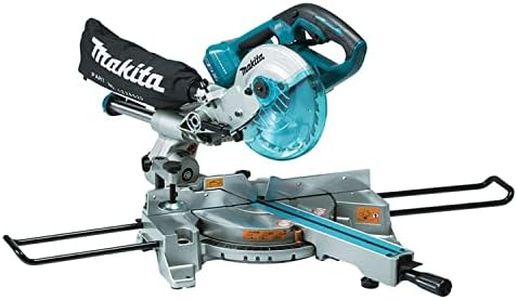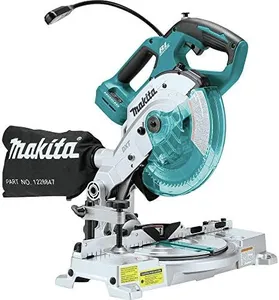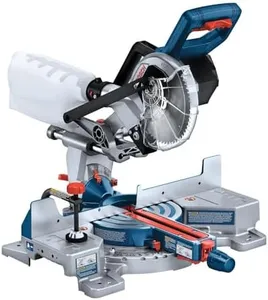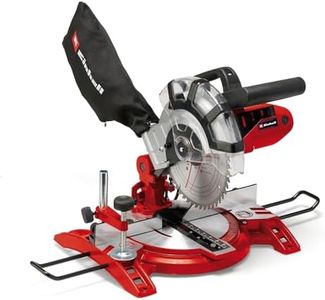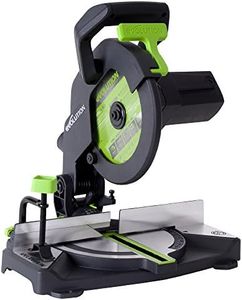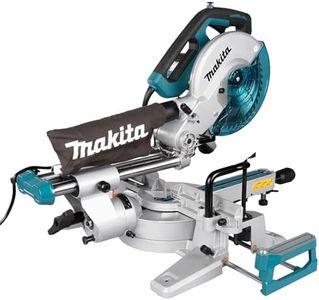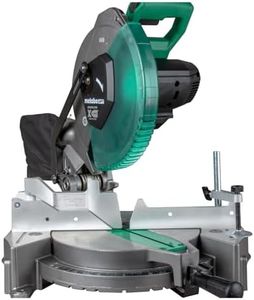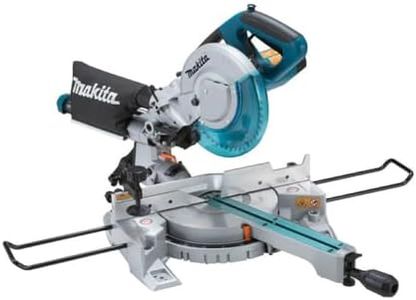We Use CookiesWe use cookies to enhance the security, performance,
functionality and for analytical and promotional activities. By continuing to browse this site you
are agreeing to our privacy policy
10 Best Compound Miter Saws
From leading brands and best sellers available on the web.Buying Guide for the Best Compound Miter Saws
Choosing the right compound miter saw can make woodworking, carpentry, and DIY tasks much smoother by delivering accurate and consistent angled cuts. It's important to understand how the different features and specifications impact the saw's performance and usability, so you can select one that matches the type and scale of work you'll be doing. Consider what projects you plan to tackle and how often you'll use the saw, as these factors can help you prioritize which features matter most to you.Blade SizeBlade size, typically measured in inches, refers to the diameter of the saw blade and determines the maximum width and depth of cut the saw can handle. Common blade sizes for compound miter saws are 8, 10, and 12 inches. Smaller blades are lighter and easier to maneuver, suitable for smaller trim or detailed work. Medium sizes offer a balance, fitting most general tasks, while the largest blades allow for larger cuts, which is ideal for cutting thick lumber or wide moldings. Pick a blade size that matches the size of the materials you'll most often be cutting.
Miter and Bevel RangeThe miter range indicates how far the saw can pivot left and right from zero degrees, while the bevel range shows the tilt of the blade for angled cuts vertically. Wider ranges provide greater flexibility for making complex cuts, such as those required in crown molding or custom framing. If you plan on making a variety of angled cuts or working on projects with intricate corners, a saw with a wider range in both miter and bevel will serve better. For simple, straight cuts, or basic angles, a narrower range is usually sufficient.
Sliding vs. Non-SlidingA sliding compound miter saw has rails that allow the blade to move forward and backward, greatly increasing the saw's cutting capacity for wide boards. Non-sliding models, on the other hand, have a fixed cutting path. Sliding saws are best if you anticipate cutting wider or larger pieces of wood, such as shelving or large trim. If you mainly cut narrow pieces or make repeated simple and quick cuts, a non-sliding model may be all you need and is typically more compact.
Motor PowerMotor power, usually measured in amps, reflects how efficiently the saw can cut through tough or thick materials. Higher amperage means more power and the ability to maintain speed under load, which is useful for frequent use or hardwoods. Lower power motors are fine for occasional use with softer or thinner materials. Choose the motor strength based on the frequency and toughness of the materials you expect to be working with.
Cutting CapacityCutting capacity refers to the maximum thickness and width that the saw can cut at various angles. This is often described for both crosscuts (straight cuts) and at maximum miter or bevel angles. If you intend to work with large baseboards, thick lumber, or wide pieces, you'll want a saw with greater cutting capacity. For smaller projects like picture frames or light trim, a lower capacity should suffice.
Laser Guide and Dust CollectionA laser guide projects a line on your material where the cut will be made, improving accuracy especially for beginners. Dust collection features help manage the significant amount of sawdust produced, making cleanup easier and keeping your workspace clearer. If precision and cleanliness are important to your workflow, prioritize saws with these features. Otherwise, you can consider simpler models without them.
Portability and WeightThe overall size and weight of the saw affect how easily you can move it between locations or store it when not in use. Lighter, more compact saws are suited to mobile work or limited space, while heavier, more robust saws may offer greater stability and durability for stationary workshop setups. Consider your workspace and whether you'll need to transport the saw frequently to guide your choice here.


